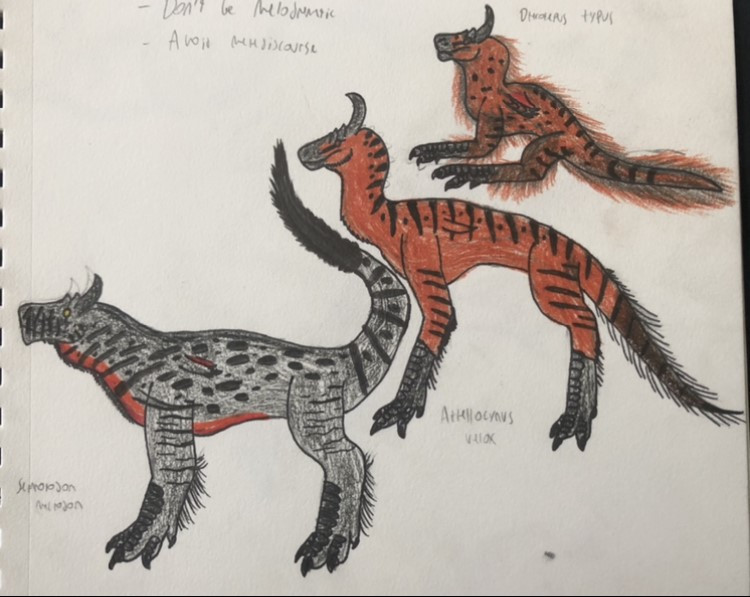HOME | DD
 BlazerixTheGreat — The mostly fluffy weirdos
BlazerixTheGreat — The mostly fluffy weirdos

#dragon #dragonart #thechroniclesofauross
Published: 2021-11-11 19:16:37 +0000 UTC; Views: 2259; Favourites: 13; Downloads: 2
Redirect to original
Description
Remember, avoid metadiscourseDragolepp’s are small Dracosaurian Dracosauriformes in the family Dracoleporidae that have evolved convergently with many mammalian and dinosaurian lineages. Dragolepp’s split from their common ancestor with Dragons in the early Paleocene, roughly 60 million years ago, and evolved on a completely different evolutionary trajectory, evolving much smaller bodies with longer legs to increase speed. Overtime, three forms in two subfamilies emerged, the robust forms referred to as Panther Drakes in the Semnotodontinae and the lithe, agile forms of the Dracoleporinae.
However these subfamilies both share three primary features, a complete lack of osteoderms to increase speed and mobility, the severe reduction of the elaborate bone spurs that construct the wings, and increased feather coverage to keep these relatively small yet active Archosaurs warm.
Since the rise of large mammalian carnivores the Dragolepp’s have been mostly outcompeted and only live in a few areas in southern Vondang’ar and the island continent of Tantavar, but there they are very successful. The largest of them is the Borok (Semnotodon macrodon) at 4 metres and 300 kilograms. Borok occupy a pantherine-like niche, feeding on large ungulates. They are solitary, save for in the mating season when several female Borok will congregate to form a small pack to protect their young.
The much more gracile Inuden (Atellocynus velox) is akin to an archosaurian cheetah, having one of the highest metabolic rates among reptiles. This active 3 metre carnivore runs down its prey of small mammals, with it being able to sprint up to 110 kilometres per hour. Inuden will also prey on birds, and can leap 6 metres into the air. Shy and solitary, Inuden are surprisingly passive and can even be tamed.
The Common dragolepp ( Dracolepus typus) of northern Tantavar is a small Dracosauriform, being around 2 metres long and 15 kilograms. These omnivorous, fluffy flightless dragons dig extensive burrows and are commonly found in large communities to keep safe from much larger predators.
























